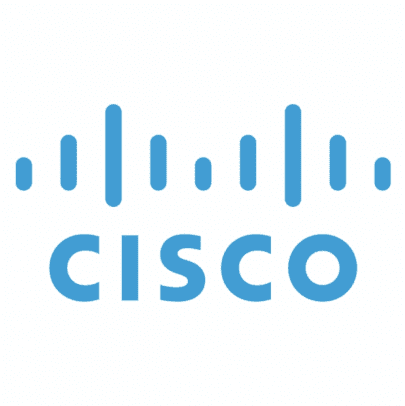Cloud UC (Unified Communications) refers to the leveraging of the Internet for the storage and transmission of voice, data, and video. Recently, Cloud UC has become a hot topic of conversation, for the simple fact that traditional means of unified communication have been relatively tepid and unjustifiable investment for many enterprises. The main reason, involves a lack of return on investment, the time (and money) involved in the implementation of hardware. In short, the grand vision that was unified communications became an ineffective dream, for the few that were willing to close their eyes and chance for it. Businesses simply became less dependent on hardware based in a single location, needing communications functionalities not only in the office, but everywhere else.
Fast forward to over the course of the past year, where mobile device proliferation has grown, along with BYOD. Accordingly, third-party providers, along with voice and PBX integration has been a large focus for many companies looking to capitalize on the trend (see the growth of breeds and business models such as CPaaS, CCaaS, & IaaS, etc.). Cloud Unified Communications are completely managed, stored, and accessed in various ways via the Internet – creating an infrastructure on-the-go with scalability, cost efficiency, and reliability. More and more enterprises are adopting these services, finding a happy medium for both the corporation and employees alike.
Among the largest concerns for many enterprises, that is actually being addressed quite beautifully, is interoperability – the emphasis on facilitating integration of UC and BYOD no matter what the device (smartphones, tablets, PCs, laptops), to create a seamless user experience that’s similar, if not a carbon copy on a different platform. Many of the newer and refined builds for cloud UC allow users to comment and collaborate on the same topic in real-time, creating a level of productivity that’s as good, if not better than actually “being there”. Formerly, documents had to be passed along via e-mail, FTP, among other methods that were simply inefficient and time consuming.
As noted above, cloud UC has experienced a rapid progression, allowing for companies to employ a single interface or tool to keep workers up to speed, even if they’re out of the office. Due to the inherent existence of malicious attackers on the web, security measures of cloud UC have also evolved, with comprehensive security compliance and authentication to ensure availability to even the most stringent of firms. Eliminating the need for many workarounds and extra steps, a large amount of firms and enterprises are adopting complex cloud UC systems, immediately recognizing the difference and never turning back.
Most Popular Cloud UC Features
Artificial Intelligence (AI)
Natural Language Processing, Sentiment Analysis, on-the-fly translations and transcriptions and other conversational AI is steadily working its way into UC solutions, and becoming more sophisticated all the time. AI is not just for large enterprises anymore but can be used for internal chatbots or helpbots to assist smaller teams.
Advanced Call Controls
Quality VoIP service should be a given in any UCaaS solution, but many providers now offer a plethora of advanced calling features such as find me, follow me, voicemail to email, virtual assistants, auto attendants and more.
Video Conferencing
As more and more businesses become international, with workers and clients residing all over the globe, video conferencing has been growing in popularity. If video conferencing is part of your UC solution, multi-location meetings can happen with ease.
Mobile Platforms
With a growing remote workforce, it is increasingly important to give employees the ability to work from any device. Mobile platforms allow users to have the same user experience on both smart phones and desktop computers
Desktop Clients or Lightweight Web-Based Portals
Many businesses depend on being in constant contact with their clients. Lightweight portals allow a company to offer clients a secure way to check in on projects, share files, review data or simply send a message to a key person. This can save the company valuable time while improving communication, security and brand awareness. Portal features can include file sharing, integrated group chat, task management, discussions forums, team calendars, branded mobile app and more.
Collaboration Features
Communication is key for any business. Strong collaboration features such as presence indication, shared calendars and persistent chat can help keep everyone on track.
APIs and Integrations
API-based add-ons allow for interoperability with other popular platforms and services. For example, a specific UC solution might let you incorporate activity from external locations such as Microsoft Office or G Suite. Additionally, integration of customer relationship management (CRM) software such as Salesforce can enable features geared toward specific industries or departments such as contact centers. Extensibility is a significant part of the appeal that UC services offer businesses.
Top 5 Cloud UC Providers
With such a rapidly expanding market, countless communications companies are vying for a stake in the industry. Here are some of the top vendors available today:

Cisco – Founded in 1984 by a small group of computer scientists from Stanford University, Cisco is one of the world leaders in providing IP-based software and hardware solutions. Their hardware ranges from consumer-level products to commercial network routers and switches, and their software helps companies large and small… Full Overview

RingCentral – Over 300,000 customers can’t be wrong. RingCentral has been a perennial favorite of VoIP review sites. They continue to innovate from either their in-house team or by making deals with smart companies. One of their best choices was to enter a partnership with Zoom, making it possible to have HD quality video conferences with large numbers of participants… Full Overview

8×8 – Consistently ranked as a Leader on Gartner’s UCaaS Magic Quadrant, 8×8 compelling platform has been recognized has one of the strongest industry options. 8×8 has expanded their market coverage beyond North America into global markets, including Asia and Pacific coverage. Despite a traditional focus on SMB organizations, the vendor has since grown their footprint to offer Enterprise grade solutions, including a complete Inbound and Outbound Contact Center platform. In fact, a major selling point is how 8×8 includes their complete Contact Center solution with their top tier Virtual Office X8 Edition plan… Full Overview
![]()
Nextiva – It should come as no surprise to hear that Nextiva frequently ranks top among user reviews of service providers. Nextiva offers compelling services and solutions at some of the best price points for the industry, all while maintaining a robust carrier-grade network with redundant data centers placed strategically around the country. Any business that requires an absolute complete package with unique, custom configurations will enjoy the level of service that Nextiva provides. Nextiva doesn’t just sell a phone system – they sell an entire experience and support network along with it… Full Overview

Fuze – Fuze provides a UCaaS platform for large enterprises, enabling the employees of such organizations to have a vast amount of flexibility in their work. Fuze has been a solid leader in the UCaaS market segment and has grown steadily in its subscription revenue as well as in adoption of its desktop and mobile platforms. As a UCaaS platform, Fuze offers quality voice, collaboration and conferencing tools… Full Overview






![What is Omnichannel Customer Service? [Benefits & Tips] What is Omnichannel Customer Service? [Benefits & Tips]](images/omni-channel-explained-350x203.png)

